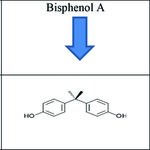Chemistry

ECHA, the European Chemicals Agency, has released findings from its Committee for Risk Assessment (RAC) which concluded that glyphosate (e.g. Roundup, by the agriculture company Monsanto, though it's been off-patent for 17 years) is not a carcinogen, nor is it a mutagen, nor is it toxic for reproduction.
How could they be so different from the United Nations International Agency for Research on Cancer, which declared that glyphosate was hazardous? It's only speculation but it may be that other science bodies lack an environmental activist choosing the composition of their working groups,…
We frequently see a contrast drawn between what is “natural” and what is “chemical.” Sometimes products are described as “chemical-free” even though every physical object is made of chemicals.
As much as this suggests a problem with our science education, it speaks to a missed opportunity for wonder. Nature is not some sort of cosmic mother figure; on the contrary, nature is composed of diverse biological and physical processes, including some pretty amazing examples of chemistry continually taking place.
If we indulge the human personification of nature and it’s “children” a bit, we could…

After being only theorized for 80 years, Harvard scientists claim they have succeeded in creating the rarest - and potentially one of the most valuable - materials on the planet.
That material is atomic metallic hydrogen and, if real, it would lead to things like a room-temperature superconductor. It's published in Science, which is a leading publication but, like all journals, is scrambling to compete. And in competing many journals have let down their guards of peer review. Writing in the Wall Street Journal about the flaws of modern peer review, we forced the journal PNAS to…

In computer science, the classic Turing test evaluates a machine's ability to mimic human behavior, and therefore is a measure of determining how close a machine can come to artificial intelligence. To pass, a computer must fool the tester into thinking it is human -- typically through the use of questions and answers.
What about for single-celled organisms? They can't communicate with words but they still communicate, and that means the search is on to create artificial ones that do just. IN ACS Central Science, researchers demonstrate that certain artificial cells can pass a basic…

A new environmental claim about endocrine disruptors would seem to be an early Christmas gift for the fundraisers and lawyers at the Environmental Working Group and NRDC but the scientist employed at each of those groups likely feels a little dread.
Because the new endocrine disruptor is salt, and despite the perennially low quality science that dribbles from their websites, even they must realize how stupid it looks. Maybe even enough worry that remotely inquisitive individuals might wonder, "Hmm. Salt is disrupting my 'endocrines?' Huh?? Maybe the other endocrine stuff they write about is…

Michael Pollan, food activist and journalist, is the proverbial man trapped in the past in his latest piece for the New York Times, criticizing the Obama administration for not catering to his bizarre beliefs about how food production actually works, and along the way taking the opportunity to smear...me.
And maybe you. And about 300 scientists and doctors who help on the American Council on Science and Health for no other reason than that they care about educating the public and don't cave into the shrill beliefs of people who self-identify with his Idyllic notions about feeding…
The group known as Islamic State (IS) reportedly used a sulpur-mustard gas against US troops in Iraq. It was detected in a black oily substance found on a rocket fired at an American airbase in Qayyarah, south of the city of Mosul.
None of the soldiers stationed at the airbase – deployed there to support a forthcoming Iraqi offensive to take back Mosul from IS – have suffered any symptoms of mustard gas poisoning. The base took decontamination measures after the rocket hit.
This is not the group’s first chemical strike. Reports are mounting up that weapons of mass destruction (WMD) are now…

Bisphenol A (BPA) is a component of some plastics and is found in food containers, plastic water bottles, dental sealants, and thermal receipt paper. In the body, BPA is a mild synthetic estrogen, one of the gigantic class of chemicals called "endocrine disruptors", even if they are 1/20,000th able to bind as well as the actual estrogen.
Environmentalists claim that despite the FDA doing an exhaustive four-year study and finding no effects, even in pregnant mice, despite feeding them 1,000 times as much BPA as a human can get, and affirming that humans process and excrete BPA far…
Electronic cigarettes have grown in popularity as an alternative to traditional cigarette smoking - the idea is that since they are just nicotine vapor, users will not be placed in peril by the 200 toxic chemicals in cigarette smoke.
Still, they are controversial. The government does not allow them to be marketed for smoking cessation because no company is large enough to survive regulatory approval - except tobacco or pharmaceutical companies, which many e-cigarette users regard as the problem.
A new paper in Environmental Science&Technology also contends that potentially toxic…

It
is commonly perceived that natural chemicals are safe while manmade substances
may be harmful. These perceptions,
however, if not supported by scientific evidence, can result in risk perception
gaps that can cause us to worry more than warranted by the evidence.
A
current example of a risk perception gap is the common belief that naturally
occurring chemicals known as isoflavones, which are present at significant
levels in some foods, are safe or even beneficial to health. In contrast, the manmade chemical bisphenol A
(BPA), which may be present at lower levels in some…